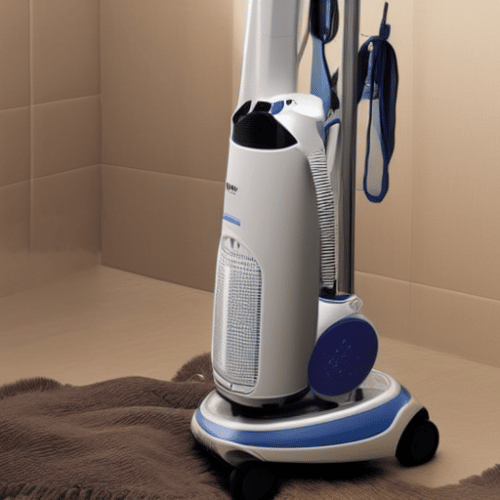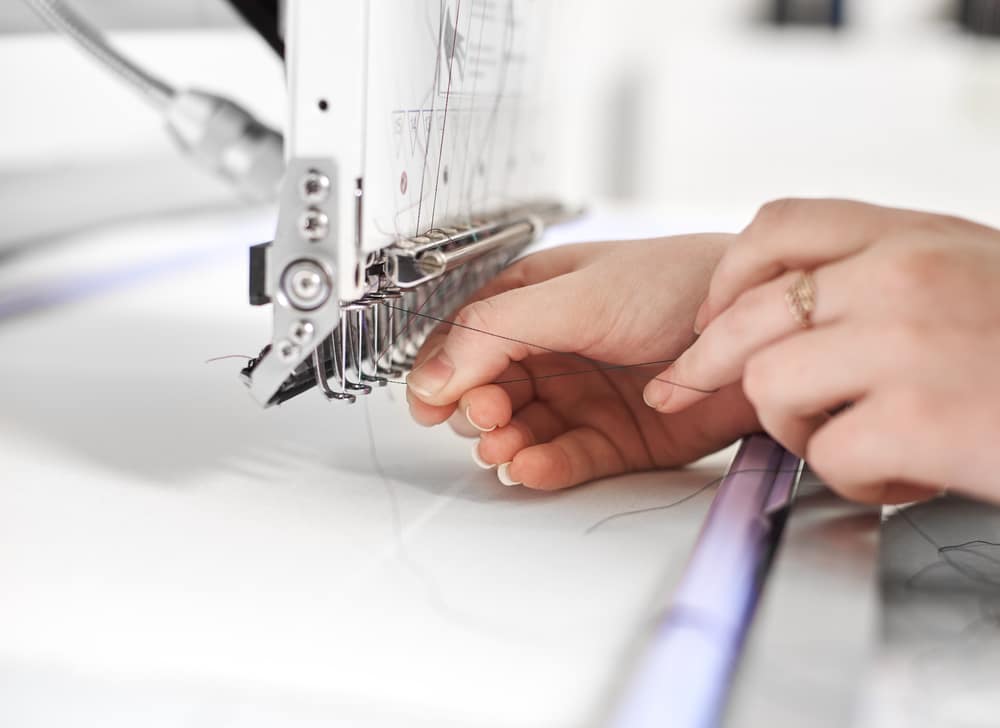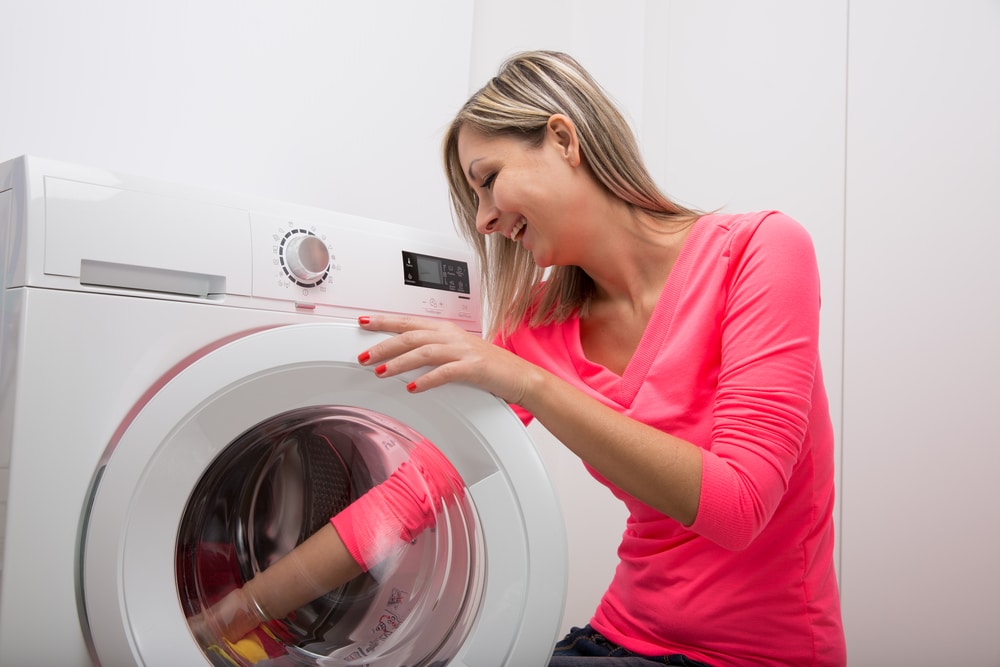Last Updated on
A garment steamer or clothes steamer easily smooths out wrinkled fabric and is an excellent alternative to using an iron. Clothing steamers can be much more versatile than iron, and many are highly portable as well. Whether you just purchased a clothes steamer or are considering having one for your house, you may be wondering how they operate and have some questions about what the steaming process entails.
This article explores how to use a garment steamer and provides some pro tips on steaming clothes. We will also talk about how to make the most of your device so that you will know how to use a clothes steamer like a seasoned professional by the time you’re done reading.
Getting Started: Garment Steamer Basics
How Do Clothes Steamers Work?
Heating water to make steam is easy with a garment steamer. Whether you use an upright steamer or a handheld steamer, the basic idea of how they work is the same.
Garment steamers heat water to the point that it can produce steam. Most garment steamers can reach a temperature of 100 degrees Celsius or hotter. When you pull the steamers trigger, the hot water vapour shoots out of a nozzle that can aim at an object of your choosing. With clothing and other fabrics, the steam relaxes the fibres, which results in the release of any wrinkles.
Do You Put a Garment Steamer Directly on Clothes?
For the most part, you will want to place the nozzle of the steamer directly on your clothes while you steam. You don’t have to press hard for the steam penetration to release wrinkles, but the closer the spray is to the actual wrinkle, the better the steam will work.
Of course, exceptions do exist. For example, you will want to hold the steamer 2 to 5 cm away from more delicate fabric while you steam. This includes fabric like silk and any clothing with embroidery or screen printing. You will also want to turn delicate fabrics inside out and steam them from the inside to prevent damage.
Can All Fabrics Be Steamed?
Before you begin steaming your clothes, always check fabric care labels first. While most fabrics can withstand a steamer, you should not steam some delicate fabrics like vinyl, suede, leather, waxed jackets, polyester, or anything with plastic that can melt. If you are unsure about a particular piece of clothing, test a small corner first to prevent possibly ruining the garment entirely.
A Step-by-Step Guide to Using a Garment Steamer
Step 1: Prepare Your Clothing Steamer for Use

When you want to use a steamer, the very first thing you should do is prepare the machine. Start by adding cold water to the water reservoir. Add water until you reach the fill line, and then firmly re-secure the lid. Take care not to overfill the water tank. Doing so will prevent the proper amount of pressure from building up inside. An insecure lid could also lead to inadequate steam production.
Most garment steamers recommend using distilled water in their machines to prevent mineral buildup in the water tank and spray tip. Otherwise, you could run into steam issues down the line. Distilled water is purified and will not leave mineral deposits on your garments or inside the machine.
When the water tank is full, plug your garment steamer in and turn it on, choose the correct heat and steam setting, and give it time to heat up. Depending on your specific steamer, this could take anywhere from 30 seconds to 3 minutes. Typically, handheld steamers tend to heat up much faster than standing steamers.
Pro-Tip: If this is your first time using a new standing or handheld steamer, we strongly recommend you start reading the user manual. The manual will provide you with helpful tips for your specific steamer, familiarise you with the control settings, and will help you troubleshoot any issues that may arise.
Step 2: Hang the Clothes You Want to Steam
While your clothes steamer heats up, hang up the clothes you want to de-wrinkle. Using hangers on a shower rod or curtain rod is our method of choice, but the back of a door or chair also works quite well. Just make sure it is sturdy enough to withstand some pulling on the fabric while you work.
Pro-Tip: To get the best results, you may want to steam delicate fabric and extra wrinkled clothes from the inside so hang them up inside out, at least to start. Also, steaming wet clothes will not release wrinkles, so wait for them to dry before steaming.
Step 3: Steam Using Downward Strokes
Before you start steaming garments, test the steam output by depressing the trigger a couple of times. If your clothing steamer has reached the appropriate temperature, it should spray steam out of the nozzle somewhat forcefully.
Now it is time to get the wrinkles out of your clothing. Follow these steps for this process:
- Run the steam nozzle across the fabric from top to bottom. Move the steamer in straight lines and repeat until the entire garment has been steamed.
- As you move around the garment, press the steam button periodically to release more steam and use your other hand to help hold the fabric taught.
- Stretching the clothing slightly while you steam will help release wrinkles. Just make sure to prevent direct contact with the steam to avoid burning your skin.
- Additionally, remember to hold the steam wand away from delicate fabrics by about 5 cm and use the lowest heat setting to start.
- Depending on the size of your clothing steamer and the amount of clothing you need to remove wrinkles from, you may need to refill the water tank from time to time. Typically, handheld steamers tend to have a much smaller water tank than standing steamers, so make sure to check the water level from time to time.
Pro-Tip: Clothes with deep creases and wrinkles may need to be steamed from both sides. Start with the garment inside and move to the garment outside if necessary.
Step 4: Give Clothes Time to Dry
When you are finished steaming, unplug and turn off your machine. Your clothes may be slightly damp or have small wet spots but don’t worry, this is completely normal and should be expected. Leave the garments you steamed hanging to dry for a bit before returning them to your closet or wearing them. This should not take longer than 5 to 10 minutes.
Step 5: Empty and Store Your Steamer
The final step is to empty and store your garment steamer. Wait until the device and water are completely cool before unscrewing the lid. If you don’t, you run the risk of hot steam shooting out and possibly burning your skin. Due to a smaller tank, a handheld steamer probably will not take as long as larger clothes steamers to cool.
Make sure it is cool, and empty any remaining water from the tank. Leave the lid off while the water tank dries to avoid mildew buildup inside the tank. We also recommend you disconnect and drain the steam hose. When completely dry, replace the lid and store it until the next time you want to use it.
Things to Consider When Steaming Special Fabrics
Aside from delicate fabrics and fabrics with embroidery, a few more precautions should be taken when using a steamer to release wrinkles on special fabrics. Follow these tips to help you make the most of your upright or handheld steamer.
- Many clothes steamers come with a handheld pad designed to allow you to apply pressure from the opposite side of the fabric while steaming. It is best used with dense fabrics with lots of wrinkles because it allows you to press the clothing while you steam.
- Some garment steamers also come with a fabric brush for thicker fabrics like jeans, tweed, corduroy, coats, and jackets. A fabric brush also helps remove fluff while steaming, so make sure not to use it on delicate fabrics that could pull.
- When steaming a garment with cuffs and a collar or pants and skirts with pleats, we recommend you lie the clothing flat to steam it. This allows you to press the steam head into the fabric with a bit of force. It will also reinforce creases.
Garment Steamer FAQs
We have collected some of the frequently asked questions about garment steamers that will help you understand this awesome appliance more.
Is It Better to Iron or Steam Clothes?
When compared to an iron, an upright or handheld steamer is considered to be the gentle option. Additionally, a garment steamer is a fast and easy option for releasing wrinkles and can be used on almost all types of fabrics. A handheld garment steamer is also more portable. Portable steamers only weigh a couple of pounds, making them more than suitable for travel.
However, traditional irons are better at pressing creases and work very well on less delicate fabrics like cotton.
Aside from the portability of a handheld steamer, steamers are also significantly more versatile than irons and can be used for more than simply steaming clothes.
What Else Can You Use Your Garment Steamer For?
Steamers provide you with one device that can accomplish many tasks. Thanks to the high temperature of steam, you can also use a clothes steamer to complete various household cleaning tasks. Steamers are even able to kill germs, bacteria, and dust mites.
Other tasks your steamer can help with include:
- Cleaning the interior of a car
- Sanitising and disinfecting bathroom surface
- Sanitising kitchen countertops
- Steam cleaning furniture with upholstery
- Steam cleaning curtains
- Removing stains on carpet or area rugs
- Steaming out the grease in clothes or breaking down grease in the kitchen
Garment Steaming for You
Now that you have read through our step-by-step guide on how to use a garment steamer and helpful pro tips, you should have more than enough information to start using your steam cleaner like the best of us.
Just remember to read the care label to make sure the items you want to steam can withstand the heat, give your steamer plenty of time to heat up, and avoid making contact with the steam, and you will do a fantastic job.
What do you use your garment steamer for? Let us know what you think in the comments below.
Emily is a woman of many talents. She has a B.A. in English and enjoys writing. Emily loves accessorising her home with quality products that not only serve a purpose but also enhance the overall convenience and tranquillity of her living space; there’s nothing like coming home to your own personal sanctuary after a long day! She loves anything that can make life easier or more comfortable—from dishware to furniture to lighting fixtures.



